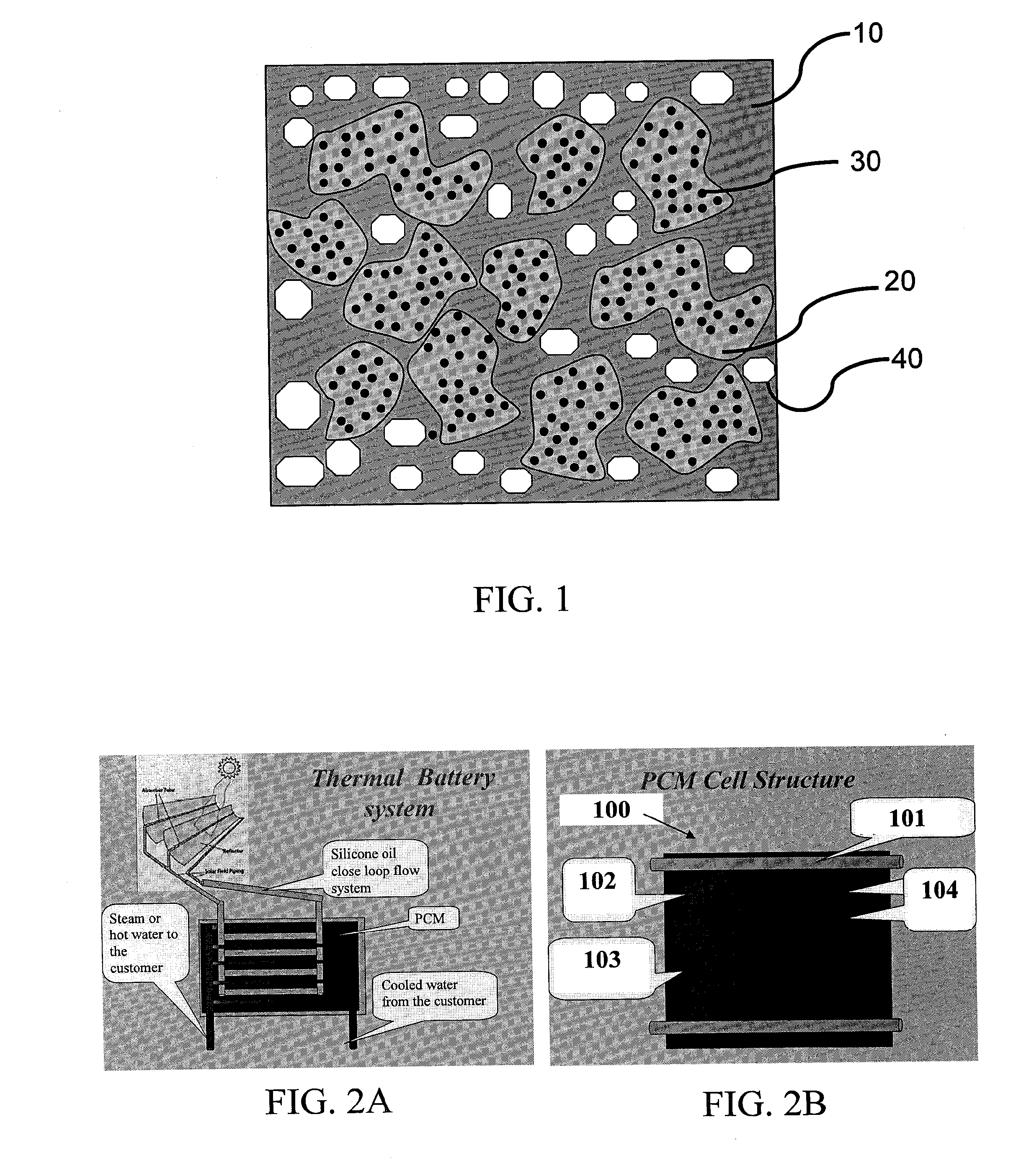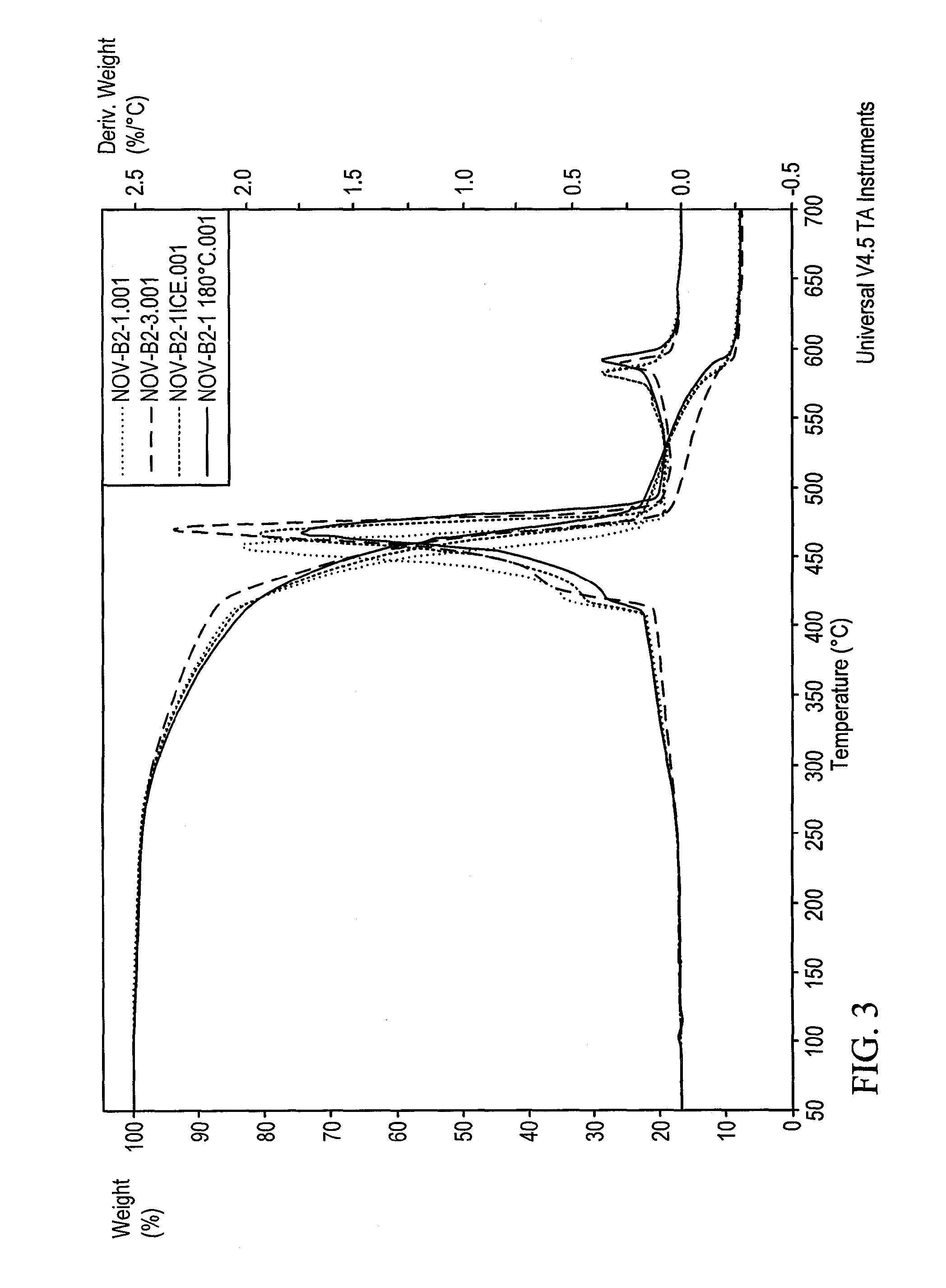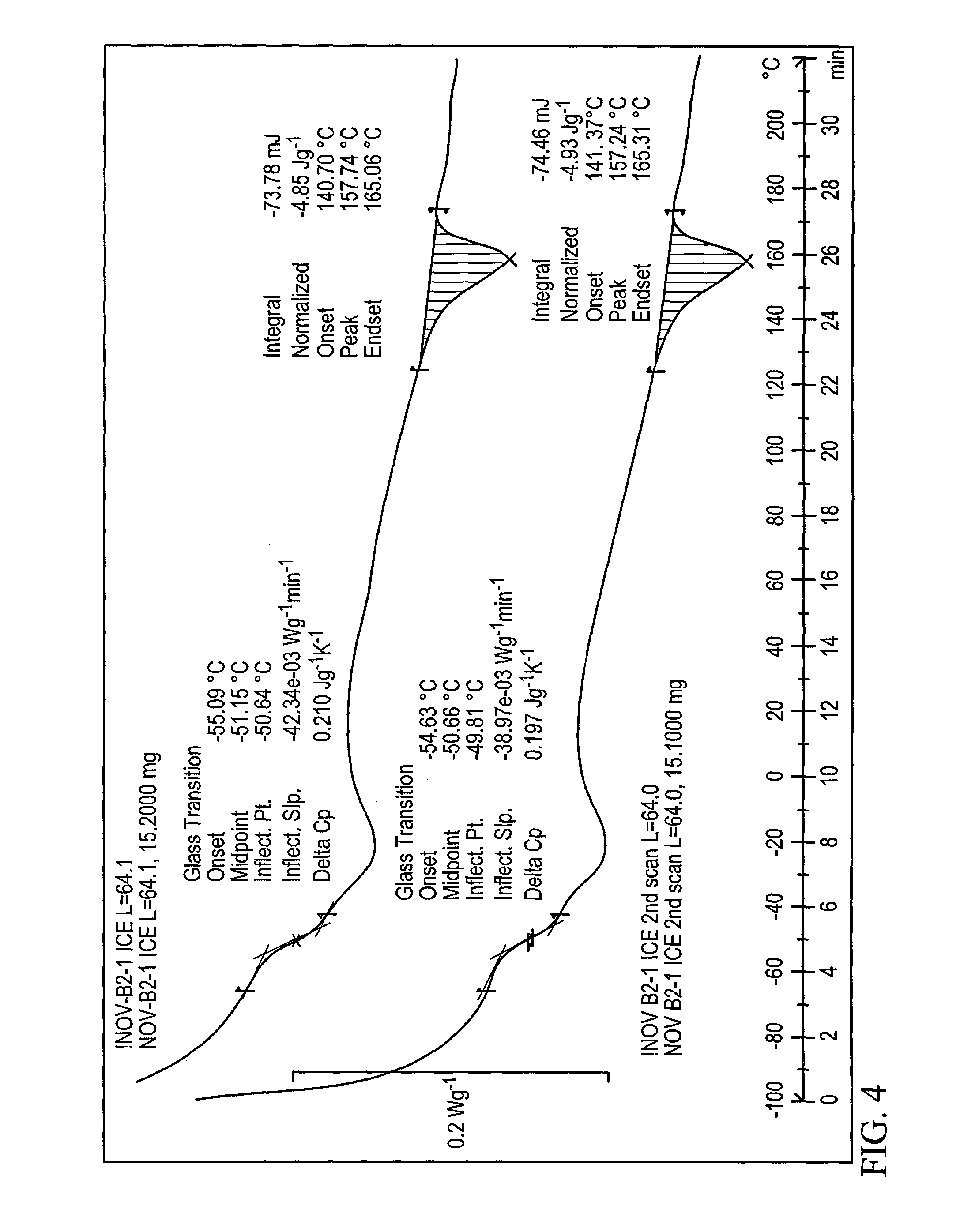Elastomer and/or composite based material for thermal energy storage
- Summary
- Abstract
- Description
- Claims
- Application Information
AI Technical Summary
Benefits of technology
Problems solved by technology
Method used
Image
Examples
example 1
[0140]60 parts by weight of EPDM rubber (ROYALENE 525 grade) were combined with 40 parts by weight of ppEPDM (FORPRENE, obtained from Softer SPA) in a Banbury mixer operating between 190 and 200° C. During the mixing, the following ingredients were added: polyethylene AC6 (1.2 parts by weight); ZnO (0.6 parts by weight); carbon black (12.0 parts by weight); and MgO (1.2 parts by weight).
[0141]The entire mixture was mixed until the mixer provided a constant stress reading (approximately 5 minutes of additional mixing). The resulting mixture was removed from the mixer as a homogeneous mass. The mass was then masticated in a “Vals” two roller mill along with 3.5 parts by weight of TMPTMA70 and 5.3 parts by weight of peroxide crosslinking agent (TRIGONOX 17-40B Butyl 4,4-di(tert-butylperoxy)valerate or LUPEROX DC40 dicumyl peroxide). Mastication continued until the material formed into a sheet. The Mooney viscosity of the mixture was 142.2 at 100° C.
example 2
[0142]An elastomeric composition was produced from the precursor formed in Example 1. The sheet removed from the mill was fed in to an extruder at an appropriate temperature to a mold and then fed into an autoclave or press at 150° C.
example 3
[0143]Elastomeric compositions were made by cross-linking of precursors made according to the present invention. The compositions were placed for 40 min in a pneumatic press at 165° C. and 8 atm pressure, and the tensile strength measured. The tensile strength of the compositions of the present invention was typically in the range of 13.7-15.7 MPa (140-160 kg cm−2). The tensile strengths of a composition containing all of the components of the present invention except for TPV and of EPDM were measured and found to be about 11 MPa (112-115 kg cm−2). The results of this experiment demonstrate that the present compositions have higher tensile strengths than those of the components from which they are made.
PUM
| Property | Measurement | Unit |
|---|---|---|
| Temperature | aaaaa | aaaaa |
| Temperature | aaaaa | aaaaa |
| Fraction | aaaaa | aaaaa |
Abstract
Description
Claims
Application Information
 Login to View More
Login to View More - R&D
- Intellectual Property
- Life Sciences
- Materials
- Tech Scout
- Unparalleled Data Quality
- Higher Quality Content
- 60% Fewer Hallucinations
Browse by: Latest US Patents, China's latest patents, Technical Efficacy Thesaurus, Application Domain, Technology Topic, Popular Technical Reports.
© 2025 PatSnap. All rights reserved.Legal|Privacy policy|Modern Slavery Act Transparency Statement|Sitemap|About US| Contact US: help@patsnap.com



